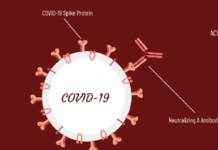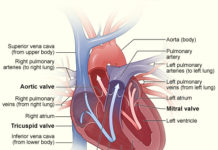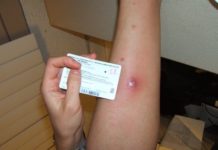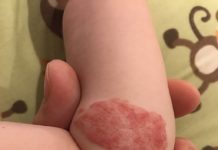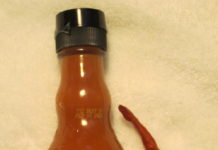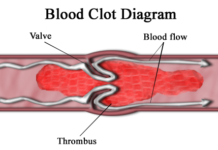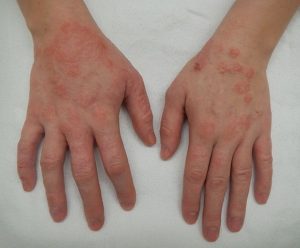
By Dezmin Goodman and Keith Pack; Farnsley Middle School (Louisville, KY)
“Eczema feels like sandpaper and hurts like a small burn when you touch it,” says Dezmin (co-author).
“It causes very irritated skin that never seems to go away. My mom first noticed my dermatitis when I was about seven years old. The leftover dry skin is what she noticed about it and she took me to the doctor to see what it was. The doctor diagnosed me with atopic dermatitis (the most common type of eczema).”
According to the Mayo Cinic, atopic dermatitis, usually called eczema, is a disease that makes your skin red, bumpy, and itchy. Eczema is typical in children, but can occur at any age. Eczema is a chronic (long lasting) disease that may flare up from time to time.
According to the National Eczema Association (NEA), these are the eight types of eczema (see Eight types of Eczema at bottom).
People with one type of eczema may also go on to develop other types depending on genetics and exposure to environmental triggers, such as pollen, animal dander, and allergies.
As the Mayo Clinic states, “Some symptoms are dry skin, itching, which could be severe, especially at night, red to brownish-gray patches, small, raised bumps. These patches could leak fluid and crust over when scratched, thickened, cracked, scaly skin, and raw, sensitive, swollen skin caused by scratching. It may occur more often in children whose parents have had asthma or hay fever.”
Even food can be associated with eczema, lik: eggs, gluten, fish, soy products, and cow’s milk. These foods in particular are linked to food allergies, and allergies can lead to eczema.
Dezmin’s mom has asthma so this may be a contributing factor to his eczema. According to the Mayo Clinic, eczema, hay fever, and asthma are in a group called atopy. This means that these diseases are due to a hypersensitivity reaction (the immune system overreacting to small allergens like environmental triggers).
New research by lead author Dr. Manuel Ferreira and colleagues of the QIMR Berghofer Medical Research Institute in Australia has helped identify the connection between asthma, hay fever, and eczema. They analyzed whether genes that are turned “off ” or “on” could increase the chance of getting one of the three diseases. This happens by the way the immune system works with these genes.
The study found that a gene called PITPNM2 is more likely to be turned off, for example, in people who smoke. If this gene is turned off then that increases the chance of someone getting eczema, asthma, or hay fever.
Other ways eczema can occur is from overly dry (too hot), chapped (too cold), too dirty, non-moisturized, too wet, and overly scratched skin. None of these affect Dezmin because his eczema may be due to genetics.
According to the NEA, there is no cure for eczema. However, there are treatments that can prevent itching and new outbreaks. You can avoid these problems by taking warm showers and putting on dermatologist-proven lotion afterwards, or not putting on scented lotions (especially on your face).
The dermatologist-proven lotion doesn’t always work; sometimes lotion is too strong for someone’s skin or not effective enough.
Some over the counter (OTC) medicines stop the itching and prevent inflammation. According to WebMD, OTC hydrocortisone (a steroid that treats inflammation) is usually recommended by doctors to treat mild eczema. Dezmin uses a lotion called Equate.
Drying carefully when you come out of the shower also helps–take a soft towel and use it to pat your skin dry and apply moisturizer while your skin is still damp.
Roughly drying your skin can lead to rashes, abrasions, and friction burn. Sometimes new lotions or skin products can make your skin have eczema if it isn’t right for your skin.
Brandon Pack, Keith’s father, also has eczema. He stated that he first got his eczema when he was 22.
“After I came home from the lake, I noticed I had a rash on my feet. At that point I went to the doctor and was diagnosed with contact dermatitis.”
He never had eczema really bad because he took care of it with an ointment called betamethasone Dipropionate (a steroid that treats inflammation, like the hydrocortisone). He only gets it in the summer.
Dezmin recently had an eczema flare up on his eyes and put tons of lotion on to make sure it didn’t spread and get worse. He states, “Now there are no spots of eczema on me, for now. I have clear and moisturized skin that prevents any bad outbreaks like the ones when I was younger. When I was younger my eczema outbreaks caused red, itchy, kind of bumpy skin in the places where the outbreak occurred.”
Eight types of Eczema
Atopic dermatitis – caused by a malfunction in the immune system and problems with the skin barrier.
Contact dermatitis – a result of skin touching a known irritant and/or allergen.
Dyshidrotic eczema – occurs on the feet and hands as itchy blisters, usually caused by exposure to allergens.
Hand eczema – caused by a combination of genes, irritants and/or allergens.
Lichen simplex chronicus – results in thick, scaly patches on the skin, often caused by too much scratching and rubbing.
Nummular eczema/discoid eczema/nummular dermatitis – usually caused by allergens or very dry skin and appears as round lesions that can weep fluid, especially in older populations.
Seborrheic dermatitis – white or yellow flaky, greasy patches in places with more oil-producing glands, caused by a combination of genetics, hormones and microorganisms on the skin.
Stasis dermatitis – happens when poor circulation to the legs causes the veins to swell and leak fluid, causing swelling and skin redness and itch, mostly in older populations.

This work is licensed under a Creative Commons Attribution-NonCommercial-NoDerivs 3.0 Unported License.


